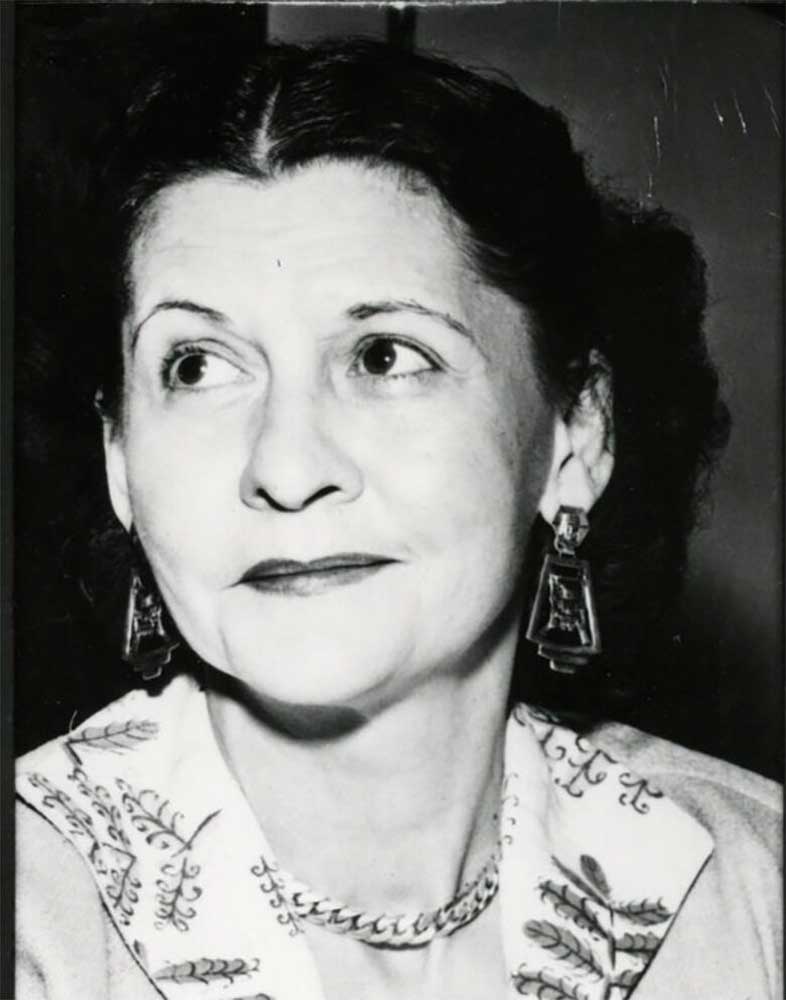Offbeat Oregon: Part 2, Spy ring falls apart in Manilla and legacy crumbles
Published 2:00 am Tuesday, April 11, 2023

- Claire Phillips in 1956, in her late 40s.
Editor’s note: This is the second in a series. To read the story in its entirety, visit redmondspokesman.com.
Trending
Claire Phillips’ spy ring couldn’t last forever. In May of 1944, one of her messengers was caught slipping food and supplies to POWs at one of the notorious prison camps. Under torture, the messenger gave her up … and on May 23, the Japanese military police came to Club Tsubaki and roughly arrested her.
Claire was interrogated, tortured, waterboarded, and burned with cigars. She played her cards carefully, spilling stale information (naming people who she knew had already left the area or been arrested or killed) and acting as if she was betraying trusts in doing so. It also helped that the only thing they knew about at the time was her smuggling of food and supplies to POWs and other prisoners. Had they known she was passing on military intelligence as well, it probably would have gone even worse for her.
Tried in a military court, Claire was sentenced to be executed. This was subsequently commuted to a sentence of 12 years at hard labor.
Trending
Less than a year later, the American forces liberated her prison. They got to her just in time — she had wasted away to under 85 pounds (her healthy weight was about 140) and had to be fed intravenously at first because her digestive system had shut down.
Hero’s fall from grace
After the war, Claire was hailed as a hero. Even before she was back in North America, her hometown newspaper was singing her praises. Soon afterward, Reader’s Digest picked up the story and spread it nationwide.
She wrote a memoir of her war activities, “Manila Espionage,” and it was published in 1947. The following year, at Fort Lewis, Gen. Mark Clark presented her with the Medal of Freedom, America’s highest award for a civilian.
The accolades kept coming. She appeared on an episode of NBC’s This Is Your Life, with the legendary Ralph Edwards. Afterward, she was presented with a home in Beaverton and a new Packard automobile. She threw herself into the lecture circuit, giving speaking engagements and appearances around the country talking about her time as an American spy behind enemy lines.
She even had a Hollywood movie made about her, starring Anne Dvorak, in 1951. It was called “I Was an American Spy.”
But behind all the activity, all was not well with her. Always a restless spirit, she’d been deeply traumatized by the cruelty she’d witnessed and the torture she’d experienced. Post-traumatic stress disorder was not yet a known thing, but she certainly had it. Nightmares woke her up screaming in the early morning hours. She beat them down with a bottle, drinking enough alcohol to ensure deep enough sleep to not be disturbed by her inner demons. Soon she was a certifiable alcoholic as well as a workaholic. Predictably, her health began to deteriorate.
Then, nearly quickly as she’d risen to fame, the world seemed to make a special effort to forget her.
Her mistake, the one that precipitated her fall from public grace, was an understandable one: She put in a claim for compensation from the government, for the expenses she’d put up during the war, and got a little carried away with her figures.
After all, how does one put a dollar value on a trauma like the one she experienced?
Most likely the way she set about it was to tally up all the revenue she received from Club Tsubaki, which she spent as quickly as she got it on relief supplies for the guerillas and prisoners, and add a healthy percentage for interest and incidentals.
In any case, the figure she came up with was $146,850 — which, in modern currency, would be worth about $1.6 million. This was such an enormous figure that it caused many people who would probably have been favorable to her case to turn away, dismissing her as a gold digger.
Naturally, her documentation was scant. The federal employees and FBI agents processing her claim suspected she was trying to take advantage of government largesse. They were not shy about expressing that view.
“She’s a prostitute,” one FBI agent wrote, in a note he left in her file. “Got a lot of publicity and is a phony.”
She also had a falling-out with some of her wartime colleagues in the Philippine resistance, and at least one of them started spreading rumors that she had been a Japanese collaborator. As Madame Tsubaki, her job had been to vamp Japanese officers — so naturally many Filipinos at the time hated her for consorting with the hated occupiers and accused her of being a Japanese collaborator. Not all of these rumors were extinguished by her arrest. Plenty of real collaborators got arrested and jailed by the Japanese during their occupation.
In the end, the government took the position that she was entitled to nothing, and the judge awarded her $1,349, which probably didn’t go far beyond covering her attorney’s fees.
That was in 1957. Three years later, weakened and getting sickly, the 52-year-old war hero caught meningitis and died.
Legacy after death
Fame and adulation are fickle things to begin with, and they seem to be especially fickle for women. In any case, following that initial postwar burst of enthusiasm for her wartime service, Claire Phillips fell quickly into obscurity. Following her death, she seemed utterly forgotten-about. Documentarian and author Sig Unander deserves a lot of the credit for bringing her story back to life. Unander has been working on a full biography of High Pockets for several years now, and when he finishes it it will probably become the definitive work on this fascinating Vaudevillean war hero.
Most recently, in 2017, the Oregon State Capitol Foundation unveiled the Claire Phillips Memorial, on the northwest corner of the state capitol grounds in Salem, at a ribbon-cutting ceremony with Gov. Kate Brown.
“Claire Phillips,” the governor remarked, “follows in this Oregon tradition of women who truly fly on their own wings.”
By the way, in case you’re wondering, no one is 100 percent sure what happened with the flotilla of submarines that Claire sent away to its doom after the all-night party with its officers. In her book, though, Claire writes that she heard back from one of them later. He told her he was the only survivor.
U.S. History
— First woman state governor
— First ex-governor to marry another ex-governor (tie with George Chamberlain)
Oregon history
— First woman Governor’s Private Secretary
— First woman governor
— Youngest governor (32)
— Shortest-serving governor (49 hours)
The Central Railroad of Oregon, a book by Richard R. Roth published in 2015 by Heritage Quest Press
“The Governor who Couldn’t Vote: Why History Forgot Oregon’s First Female Head of State,” an article and news report published Feb. 27, 2019, by Oregon Public Broadcasting
“Heritage: Oregon’s first woman governor lasted a weekend,” an article by Kaylyn F. Mabey published on Feb. 12, 2015 in the Salem Statesman Journal
A series of articles written by Dr. Kimberly Jensen and posted in April and May 2014 on Kimberly Jensen’s blog.








